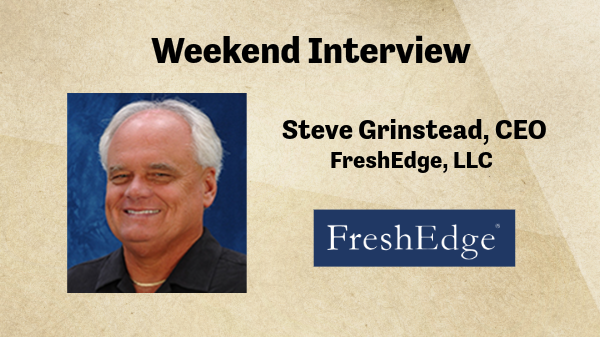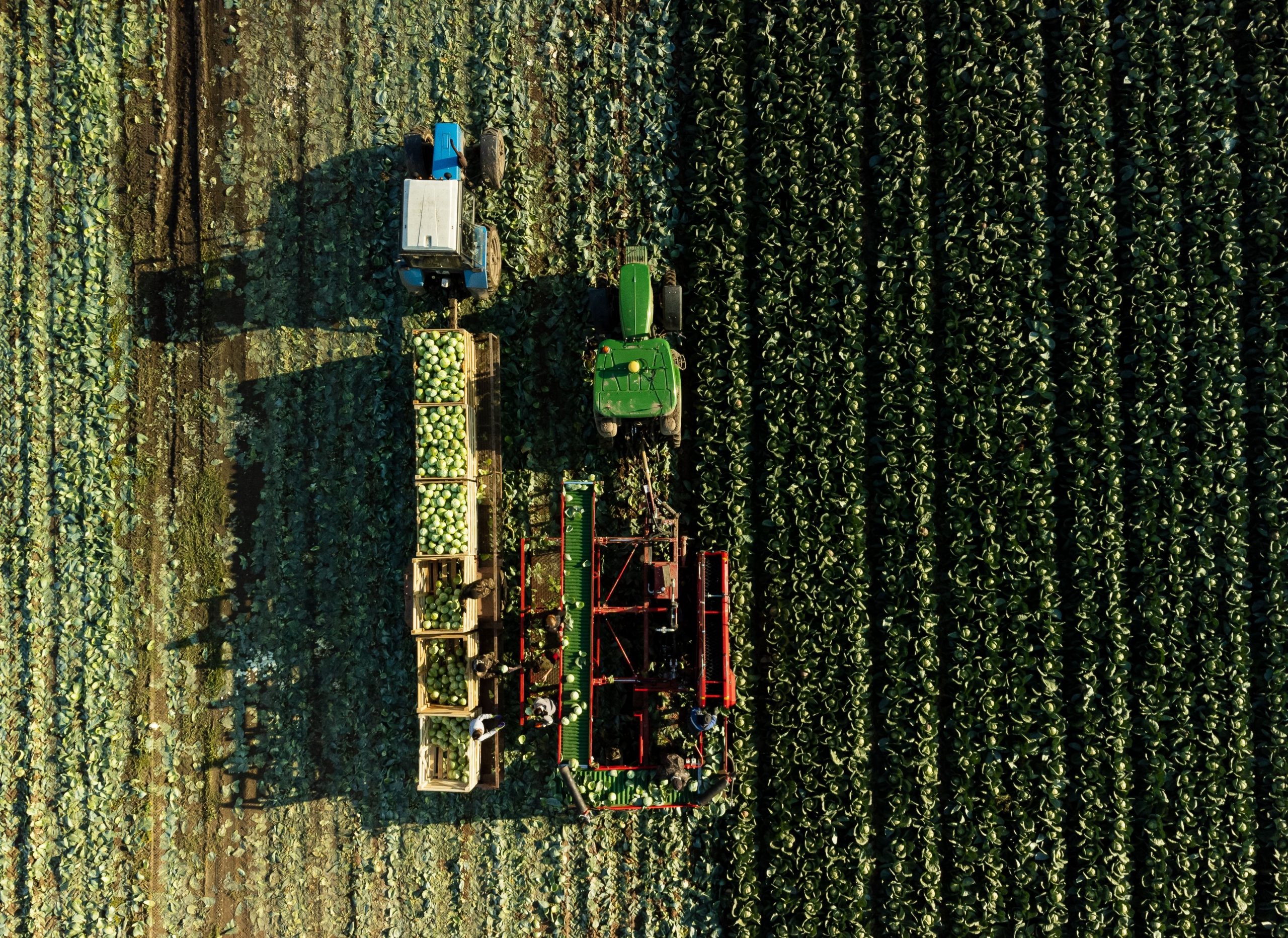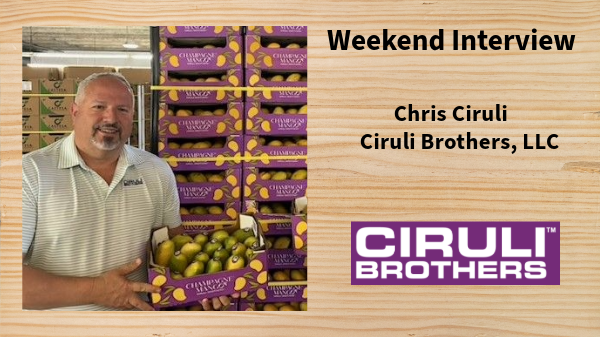Welcome to Blue Book!
Are you ready to join the thousands of companies who rely on Blue Book to drive smarter decisions? View our plans and get started today!
Still have questions? We’d love to show you what Blue Book can do for you. Drop us a line– we’ve been waiting for you.
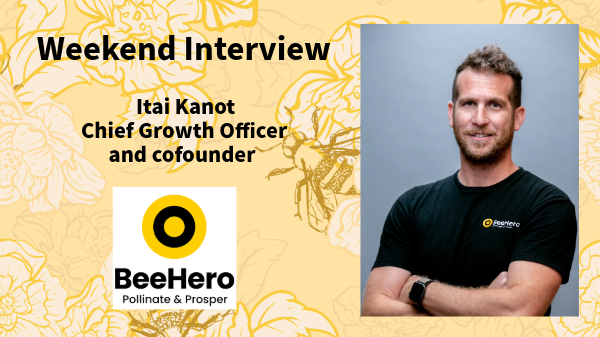
In this article
BeeHero was founded in 2017 in Tel Aviv, Israel and provides pollination services across the United States and in over 10 other countries. The company uses high-tech tools to optimize pollination for growers while providing detailed data on the strength and viability of bees and hives.
We spoke to Fresno, CA-based cofounder and Chief Growth Officer Itai Kanot about how BeeHero can help growers achieve better results in pollination and yields.
Q: Tell us about the founding of BeeHero, was it in response to the devastation of colony collapse disorder?
I grew up in a small village in rural Israel, where beekeeping wasn’t just my job, it was my way of life.
My father, who runs Israel’s largest apiary, taught me everything about bees and by the time I was old enough to attend Reichman University, I had already spent most of my life working with them. But I never imagined that beekeeping and technology could collide in the ways we’ve achieved at BeeHero.
At Reichman University, I met Omer Davidi (BeeHero’s CEO), a cybersecurity polymath. We realized that by working together we could solve one of the biggest challenges in agriculture: pollination. Seventy-five percent of the world’s food crops depend on insect pollination, yet bee populations are declining, and traditional pollination methods are inefficient and outdated.
We wondered if we could use technology to optimize pollination, enhance bee colony health, and help secure the world’s food supply, and that’s how BeeHero was born. By leveraging machine learning algorithms and IoT sensors, we set out to revolutionize the way commercial pollination is managed.
Our technology provides data-backed insights to help farmers maximize crop yields and enable beekeepers to monitor and improve the health and welfare of bees, because when pollinators thrive, so do the crops they pollinate.
What started as a conversation between unlikely classmates quickly became a mission to transform global agriculture. Today, we’re proving that innovation and nature don’t have to be at odds—they can work together to create a more sustainable future.
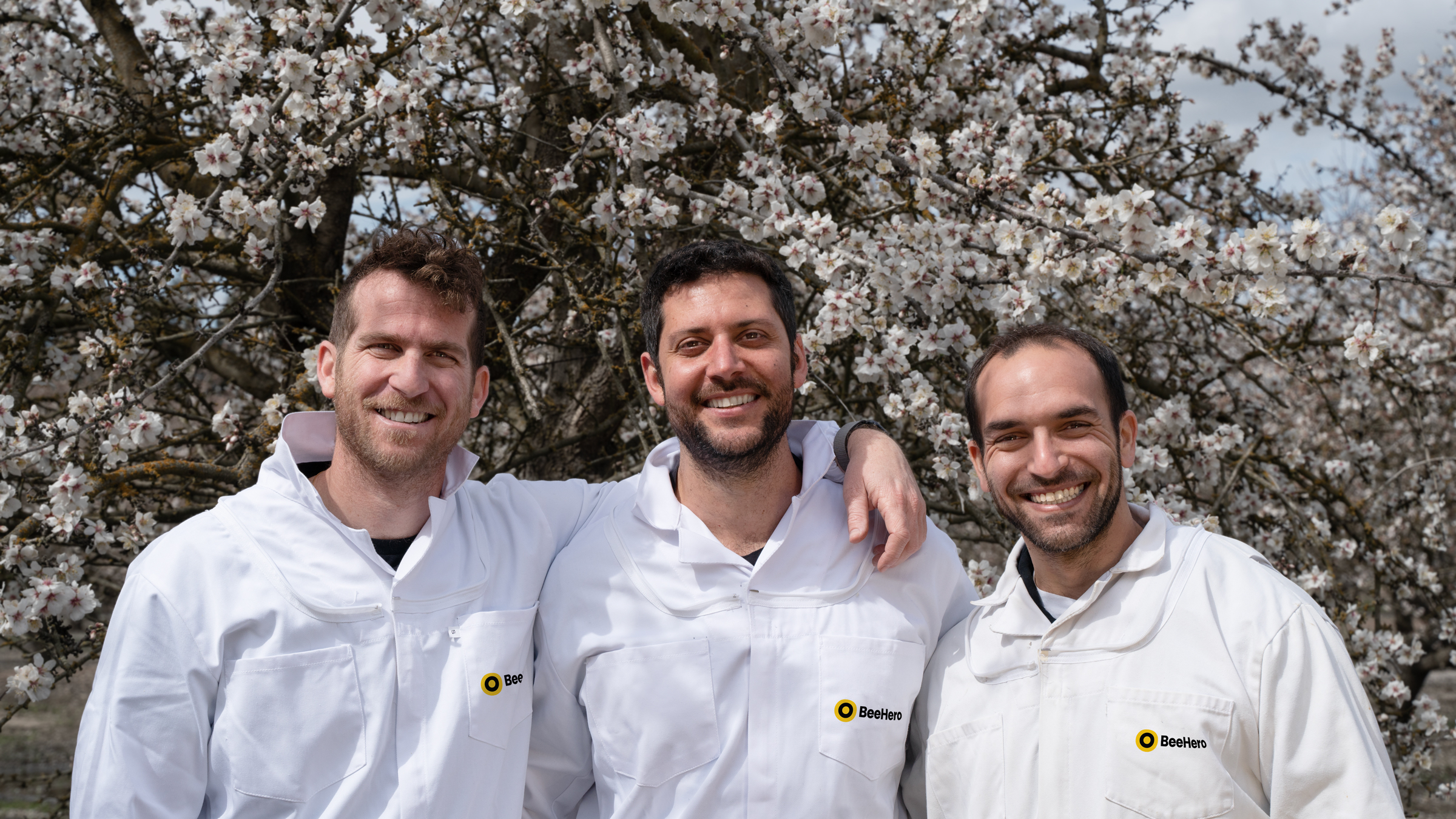
Q: Where do your bees come from? Are any owned by BeeHero or are they all from contracted beekeepers?
BeeHero contracts with beekeepers to provide precision pollination services to growers. In doing so, we help beekeepers strengthen the beehives they provide for growers, which enables farmers to grow more food. However, we also manage our own hives for research.
Q: How many bees and beekeepers do you work with on an annual basis? How does the system work?
BeeHero partners with experienced beekeepers who provide healthy, strong bee colonies for pollination services.
We place our IoT sensors in hives (via our Precision Pollination as a Service offering) and fields (via our Pollination Insight Platform) to collect real-time data on hive health, bee activity, and environmental conditions, enabling continuous monitoring of the pollination process.
The data is analyzed using machine learning to assess bee health and pollination needs to provide beekeepers and growers with actionable insights to enhance pollination efficiency, boost crop yields, and support bee population health, bridging technology and traditional beekeeping for a more sustainable agricultural system.
Q: When did you first start working with growers in the United States?
We began working with beekeepers in the United States in November 2018, started engaging growers in late 2019, and officially provided pollination services to growers for the first time in January 2020.
We contract with expert beekeepers who rent their hives to growers. By establishing positive relationships with the beekeeping community and their grower-customers, we’ve been able to expand our network of growers.
Initially, we established connections in California’s almond industry, and have since expanded to a variety of growers across the USA and abroad, including seed, row, and specialty crops.
Q: What’s the difference between in-hive precision pollination as a service (PPaaS) and the in-field Pollination Insight Platform (PIP)?
The difference between our in-hive and in-field sensing solutions lies in where and how we collect and utilize data to optimize pollination.
Our PPaaS focuses on monitoring bee colony health inside the hive, using IoT sensors to track hive conditions, colony strength, and activity. This helps beekeepers maintain healthy colonies, ensuring they’re strong and optimized for pollination.
By improving bee health and reducing risks like colony collapse, PPaaS directly enhances pollination efficiency for growers.
Our PIP provides real-time monitoring of pollination activity in fields and orchards. Using advanced sensors, PIP tracks bee visits to flowers, timing, density, and foraging patterns, allowing growers to optimize hive placement, adjust bloom timing, and improve overall yield.
This technology is especially valuable for crops like apples, almonds, and blueberries, which require precise pollination timing and density to maximize fruit size and quality. Additionally, seed producing crops such as onions and carrots, which rely on high pollination efficiency, benefit significantly from real-time tracking of bee activity.
While both technologies contribute to improving pollination outcomes, their applications vary based on crop type. Crops with complex pollination needs, such as apples and almonds, require more in-field monitoring, making PIP essential for optimizing pollination strategies.
On the other hand, crops that are less dependent on pollinators may not need as much in-field tracking but still benefit from healthier hives, which can be achieved and maintained through PPaaS.
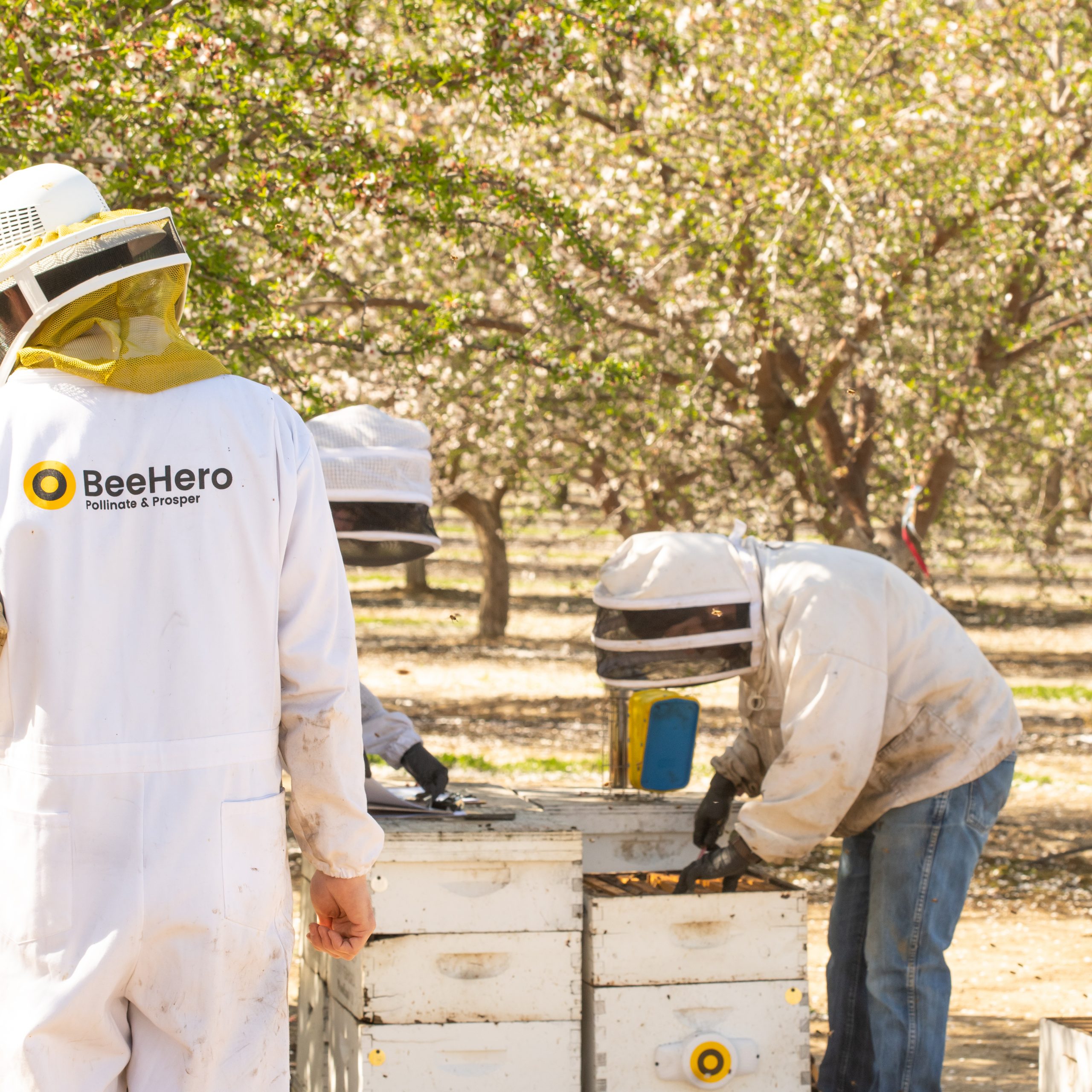
Q: How do you provide real-time monitoring? What if there’s weak or no wireless in an area?
Our platform utilizes gateways, which are a vital link between our sensors and the central data platform. They aggregate data from multiple sensors and relay the data to the cloud using wireless protocols like cellular networks. They also sometimes perform initial processing to filter noise and optimize bandwidth.
To address connectivity challenges, we employ multiple solutions. If connectivity is weak or unavailable, sensors store data locally and upload it once restored.
In areas with limited direct wireless access, a mesh networking approach allows sensors to relay data through nearby nodes, while backup solutions like cellular or satellite communication ensure uninterrupted data transmission.
Security features encrypt the transmitted data, protecting hive and agricultural information. By enabling real-time monitoring, scalability, and improved decision-making, the gateway ensures seamless communication and reliable pollination management, even in remote locations.
Q: How much impact does weather have on the bees and pollination?
Weather significantly impacts both bees and pollination processes, influencing everything from bloom timing to colony health. Poor weather conditions can delay flower bloom, not only reducing the food supply essential for colony growth but affecting crop yields.
Bees are also highly sensitive to weather; rain, high winds, and extreme temperatures can limit foraging activity and pollination effectiveness. Adverse weather also affects colony health, potentially shortening bee lifespans and increasing the risk of disease and stress within the hive.
Given its profound impact on bee colonies and pollination, weather remains a critical factor for both beekeepers and agricultural practices.
Q: Within hives, why are bees more plentiful on some comb frames than others?
Bee distribution among comb frames in a hive varies due to several key factors. Frames containing brood, or developing bees, typically have a higher concentration of worker bees, as they regulate temperature and provide necessary care for larvae.
Similarly, frames used for storing honey and pollen attract large numbers of bees, ensuring the colony has essential food resources, especially during periods of scarcity. Temperature regulation also plays a role, with bees clustering together to maintain warmth around the brood in cooler conditions and spreading out in warmer temperatures to cool the hive.
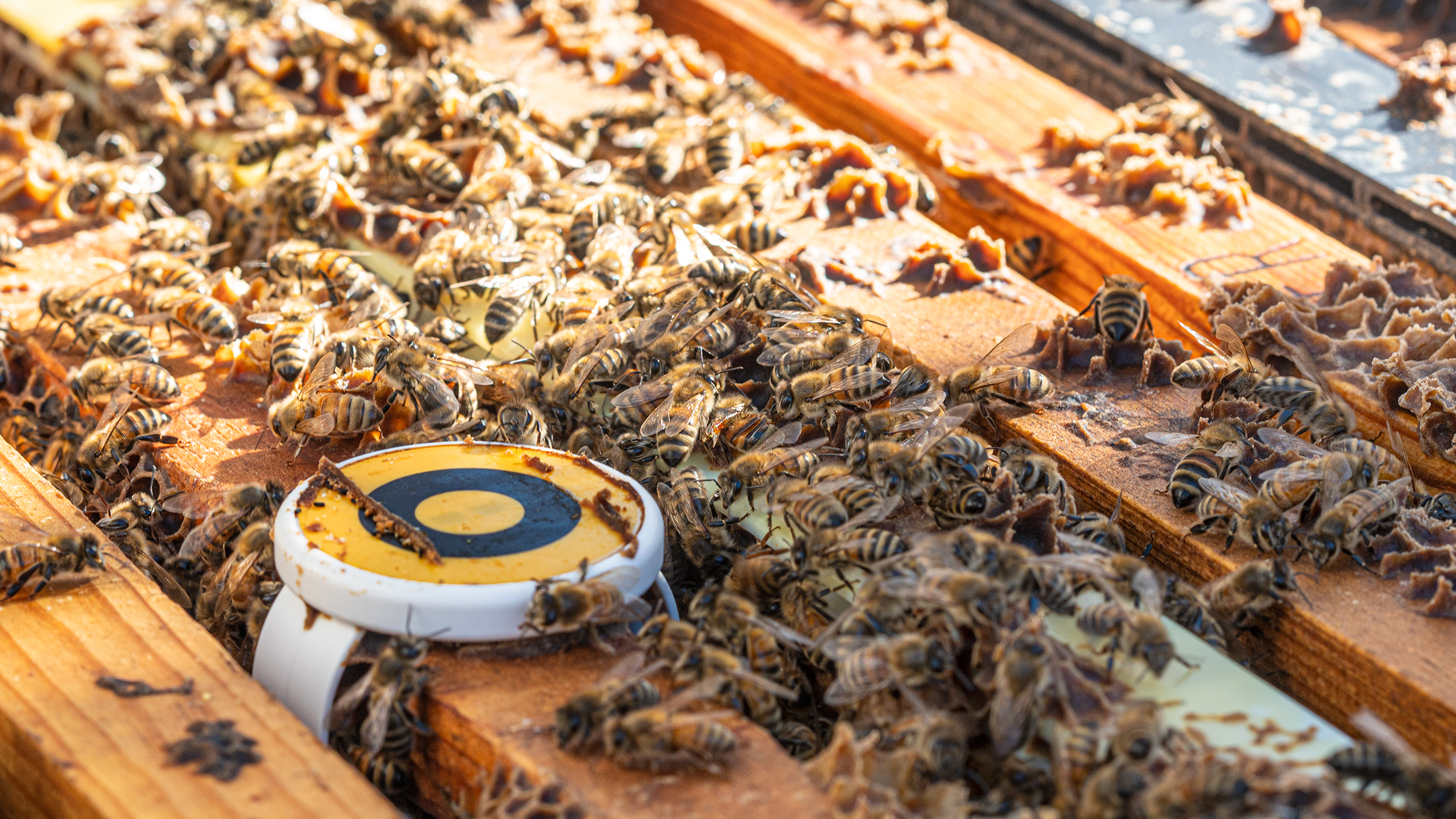
The queen’s presence significantly influences bee movement, as bees naturally congregate around her to support reproduction and maintain social structure.
Additionally, the condition of the frames matters—newer frames tend to attract more bees as they build up wax and store resources, while older, less active frames may see reduced activity. Environmental factors, including light, humidity, and external temperatures, also affect where bees position themselves within the hive.
Q: What are BeeHero’s plans for the future?
BeeHero’s mission is to become an essential component of global food production. We plan to expand our precision pollination technology, enhance AI-driven analytics, and grow our global presence.
We have a strong and expanding presence in North America and Australia, and we’re targeting further expansion into European and Latin American markets, focusing on crops like berries and avocados that face significant pollination challenges.
On the tech side, we’re continuing to invest in AI, IoT, and machine learning to refine predictive pollination models and further enhance sensor connectivity in remote areas. Overall, we aim to make pollination more data-driven, efficient, and sustainable, cementing our role as a global leader in precision pollination.
Q: What else would you like readers to know?
At BeeHero, we’re driving the future of precision pollination and sustainable agriculture, expanding our reach and deepening our impact amid dwindling global resources and appalling bee colony losses.
Recent milestones include a new office in Lima, Peru, launching a strategic partnership with the country’s National Confederation of Apiculturists to enhance pollination in vital crops, and high-level recognition for our Pollination Insight Platform, as one of Time magazine’s Best Inventions of 2024 and being named as a World Ag Expo Top 10 New Product for 2025.
By prioritizing bee welfare, we’re not only optimizing pollination but also strengthening biodiversity, reducing colony losses, and fostering healthier ecosystems—ensuring a more sustainable future for both pollinators and global food production.



